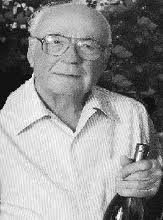Montana (/mɒnˈtænə/ ⓘ mon-TAN-ə) is a state in the Mountain West subregion of the Western United States. It borders Idaho to the west, North Dakota and South Dakota to the east, Wyoming to the south, and the Canadian provinces of Alberta, British Columbia, and Saskatchewan to the north. It is the fourth-largest state by area, the eighth-least populous state, and the third-least densely populated state. Its capital is Helena, while the most populous city is Billings. The western half of the state contains numerous mountain ranges, while the eastern half is characterized by western prairie terrain and badlands, with smaller mountain ranges found throughout the state.
Most of Montana first came under American sovereignty with the Louisiana Purchase in 1803 and was explored by the Lewis and Clark Expedition shortly thereafter. Fur trappers followed and were the main economic activity in the area until gold was discovered in 1852. The ensuing gold rush, along with the passage of the Homestead Acts in 1862, brought large numbers of American settlers to Montana. Rapid population growth and development culminated in statehood on November 8, 1889. Mining, particularly around Butte and Helena, would remain the state's main economic engine through the mid-20th century.
Montana has no official nickname but several unofficial ones, most notably "Big Sky Country", "The Treasure State", "Land of the Shining Mountains", and "The Last Best Place". Its economy is primarily based on agriculture, including ranching and cereal grain farming. Other significant economic resources include oil, gas, coal, mining, and lumber. The health care, service, defense, and government sectors are also significant to the state's economy. Montana's fastest-growing sector is tourism, with 12.6 million tourists (as of 2019) visiting the state each year.
Etymology
The name Montana comes from the Spanish word montaña, which in turn comes from the Latin word montanea, meaning "mountain" or more broadly "mountainous country". Montaña del Norte ('Northern Mountain') was the name given by early Spanish explorers to the entire mountainous region of the west. The name Montana was added in 1863 to a bill by the United States House Committee on Territories (chaired at the time by James Ashley of Ohio) for the territory that would become Idaho Territory.
The name was changed by representatives Henry Wilson (Massachusetts) and Benjamin F. Harding (Oregon), who complained that Montana had "no meaning". When Ashley presented a bill to establish a temporary government in 1864 for a new territory to be carved out of Idaho, he again chose Montana Territory. This time, representative Samuel Cox, also of Ohio, objected to the name. Cox complained that the name was a misnomer given that most of the territory was not mountainous, and thought a Native American name would be more appropriate than a Spanish one. Other names, such as Shoshone, were suggested, but the Committee on Territories decided that they had discretion.
For thousands of years, various indigenous peoples have inhabited the land that is now Montana. Historic tribes encountered by Europeans and settlers from the United States included the Crow in the south-central area, the Cheyenne in the southeast, the Blackfeet, Assiniboine, and Gros Ventres in the central and north-central area, and the Kootenai and Salish in the west. The smaller Pend d'Oreille and Kalispel tribes lived near Flathead Lake and the western mountains, respectively. A part of southeastern Montana was used as a corridor between the Crows and the related Hidatsas in North Dakota.
Cattle ranching
Cattle ranching has been central to Montana's history and economy since Johnny Grant began wintering cattle in the Deer Lodge Valley in the 1850s and traded cattle fattened in fertile Montana valleys with emigrants on the Oregon Trail. Nelson Story brought the first Texas Longhorn cattle into the territory in 1866. Granville Stuart, Samuel Hauser, and Andrew J. Davis started a major open-range cattle operation in Fergus County in 1879. The Grant-Kohrs Ranch National Historic Site in Deer Lodge is maintained today as a link to the ranching style of the late 19th century. Operated by the National Park Service, it is a 1,900-acre working ranch.
Rivers, lakes and reservoirs
Montana has thousands of named rivers and creeks, 450 miles of which are known for "blue-ribbon" trout fishing. Montana's water resources provide for recreation, hydropower, crop and forage irrigation, mining, and water for human consumption.
Montana is one of few geographic areas in the world whose rivers form parts of three major watersheds (i.e. where two continental divides intersect). Its rivers feed the Pacific Ocean, the Gulf of Mexico, and Hudson Bay. The watersheds divide at Triple Divide Peak in Glacier National Park. If Hudson Bay is considered part of the Arctic Ocean, Triple Divide Peak is the only place on Earth with drainage to three different oceans.
The tallest building in the state, in Billings....
Montana has one city, Billings, with a population over 100,000; and three cities with populations over 50,000: Missoula, Great Falls and Bozeman. The state also has five Micropolitan Statistical Areas, centered on Bozeman, Butte, Helena, Kalispell and Havre.
Missoula, the second largest city in Montana...
If you want to read a whole lot more, go here: https://en.wikipedia.org/wiki/Montana
- SERVES
- 4
BLTs don't mean just sandwiches anymore! This favorite trio brings a twist to chicken salad. And we think you'll agree our homemade salad dressing takes it over the top!
- 1/2 cup mayonnaise
- 1/4 cup barbecue sauce
- 2 tablespoons grated onion
- 1 tablespoon lemon juice
- 1/2 teaspoon black pepper
- 8 cups torn leaf lettuce or iceberg lettuce
- 2 hard-cooked eggs, cut into wedges
- 2 large tomatoes, chopped
- 3 cups chopped cooked chicken
- 8 slices bacon, cooked and crumbled
- In a small bowl, combine mayonnaise, barbecue sauce, onion, lemon juice, and pepper; mix well. Cover and chill until ready to serve.
3. Spoon dressing over salads; sprinkle with crumbled bacon.
On March 21st, National Single Parents Day honors the mothers and fathers holding down the fort with all the hard work, devotion, and sacrifices involved in single parenting. Raising children can be challenging. Doing it without a partner doubles the burden. Whether by choice or circumstance, single parents carry a heavy load. Between work, school, daycare, doctor visits, and the list goes on, one person can only do so much.
Many single parents find support from family. Much like other families, grandparents, siblings, and other extended family help out. It’s important that they do. According to the 2016 U.S. Census, 23% of American children are living with a single mother and 4% are living with a single father.
Being a single parent doesn’t make someone a bad parent. Many single parents would agree that children benefit from the care and love of two parents. However, the love of one parent and a supporting cast often get the job done, too.
HOW TO OBSERVE
We all know of a family member, friend, neighbor, co-worker, or someone who is a single parent. Support and appreciate them. Make this day a special one for the single parents that you know.
NATIONAL SINGLE PARENT DAY HISTORY
In 1984, Janice Moglen wrote an article with the hope that Single Parent Day may one day gain the recognition many connect with Mother’s Day and Father’s Day. She collaborated with the organization, Parents Without Partners, and began to petition to have states declare recognition of Single Parent Day. The day of March 21st coincides with the inception of Parents Without Partners, which began on March 21, 1957. Proclamation 5166 was presented to, and signed, by President Ronald Reagan declaring March 21, 1984, as National Single Parent Day.











No comments:
Post a Comment